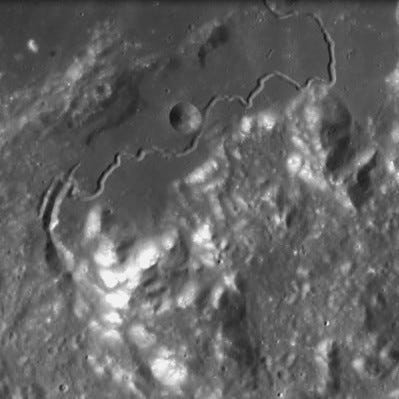The ancient lava channel near which Apollo 15 astronauts landed
The meandering rille of Hadley.
Seen here is the twisty rille of Hadley, an ancient lava channel near which NASA's Apollo 15 spacecraft landed.

The lava-carved sinuous rille of Hadley was formed during the time of active volcanism on the Moon. It seems to have a vent source near the bottom left of the image, besides the mountain. From there, the rille stretches up to a distance of 120 kilometers, beyond the image view.
The lava flowing through the rille must be highly fluid (low viscosity) to cause such striking twists and turns. The Apollo 15 landing site is in the image top right, in the smooth area near the rille. Photographs from Apollo 15 astronauts of the rille walls indicate various layers of flows, suggesting not one but lava flows from multiple volcanic eruptions.
Physically examining and sampling more such sinuous rilles via future lunar missions is exciting because these rilles expose layers of past lava flows, giving us an entry point into the volcanic history of the Moon.

